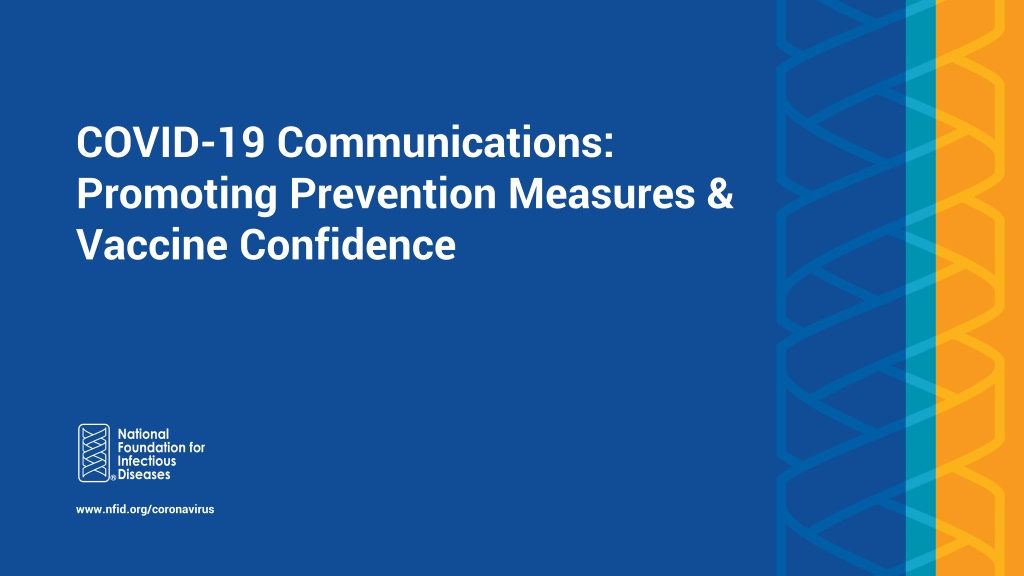COVID-19 Communications: Promoting Prevention Measures & Vaccine Confidence
Promoting prevention measures and vaccine confidence during the COVID-19 pandemic requires clear and consistent communication, addressing concerns, countering misinformation, and collaborating across sectors. Key principles of respect, empathy, transparency, and equity guide effective communication strategies to ensure the public receives accurate information and understands the evolving nature of the situation. By engaging influencers and trusted messengers, reinforcing positive social norms, and addressing barriers to adherence, communities can work together to combat the spread of the virus successfully.
Download Presentation

Please find below an Image/Link to download the presentation.
The content on the website is provided AS IS for your information and personal use only. It may not be sold, licensed, or shared on other websites without obtaining consent from the author. Download presentation by click this link. If you encounter any issues during the download, it is possible that the publisher has removed the file from their server.
E N D
Presentation Transcript
COVID-19 Communications: Promoting Prevention Measures & Vaccine Confidence www.nfid.org/coronavirus
COVID-19 Communication Strategies Communicate clearly and often Use facts whenever possible, acknowledging that information continues to evolve Provide consistent, tailored information While messages need to be consistent, the way to say it may change based on audience Acknowledge and address concerns Questions and concerns are expected and should be addressed directly Offer practical solutions and hope Motivate by framing prevention measures and vaccination as best tools to help stop the spread Counter misinformation Proactively share accurate information Foster positive social norms Reinforce importance of prevention measures by making desired behaviors visible and celebrated Engage influencers and trusted messengers Work with trusted leaders and organizations with influence and credibility to boost confidence Collaborate across sectors Ensure consistent communication, policy, and action to reduce confusion
Evolving COVID-19 Knowledge Potential for transmission post- vaccination New, emerging variants Duration of immunity Need for annual vaccinations/ booster doses Impact of vaccination on daily activities How long masks will be necessary
Addressing Barriers to Adherence Individuals may not be aware of current guidelines or understand how to properly follow them Unclear, changing guidelines cause confusion among the public and plant seeds for misinformation Socioeconomic status may also be a significant barrier to following recommendations Acknowledging challenges can make messaging more empathetic, credible, and effective
Encouraging Vaccine Acceptance Foster vaccine confidence among the moveable middle Those who identify as wait and see are more likely to be persuaded Do not expect to change the mind of those who have firmly decided not to be vaccinated Address concerns and misinformation Acknowledge that questions and concerns are reasonable and expected Understand the basis of the concerns Suggest they talk with a trusted healthcare professional about specific medical concerns Communicate transparently, but empathetically about COVID-19 vaccines Talk about development process, technology, ingredients, side effects, and ongoing safety monitoring Avoid lecturing or shaming, and know when to move on
COVID-19 Communications Toolkit www.nfid.org/covid-19-communications


























